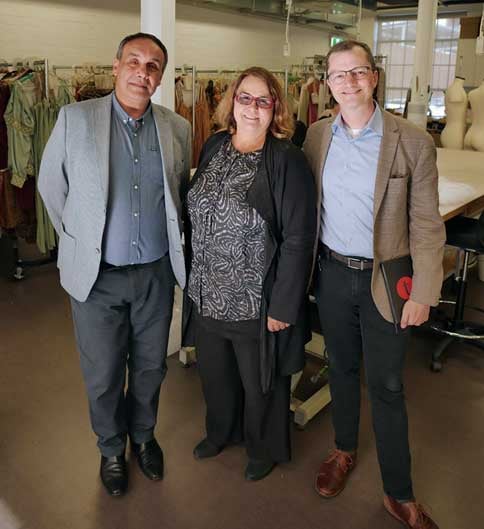Arts and Culture
Article
The Culturephiles
cb5a0972-3caa-410b-aea9-914e682e3e86
3 min
https://edge.sitecorecloud.io/tessituraneab9a-tessiturane5642-staging-5396/media/Images/Discover-Images/Andrew-Blog/Archive/Can-Dance-Save-a-Life/Boab-Tree-Flickr-user-HC-11662605566_7e33b454bf_o-768x465.jpg?h=465&iar=0&w=768
Combatting despair with dance in Western Australia
Can Dance Save a Life?

President & CEO, Tessitura
Can Dance Save a Life?
9/25/2019
3 min
You could have heard a pin drop.
I was sitting in the office of Jessica Machin, Executive Director of West Australian Ballet, joined by Tessitura’s Managing Director in the region, Jeremy Dixon. We wanted to know what her current priorities were and expected to hear about The Nutcracker or their production of Alice in Wonderland.
We heard a far different story.

Jeremy Dixon, Tessitura's Managing Director, Asia Pacific; Jessica Machin, Executive Director, West Australia Ballet; and me
As she unfolded the Ballet’s community engagement priorities, Jeremy and I sat speechless.
Based in the coastal city of Perth, West Australian Ballet has a mission to serve the entire state. Western Australia is the country’s biggest state, and the most remote. Much of it also struggles with poverty.

That's Western Australia at left, in blue.
Rich in natural resources, the remote areas of the state are dotted with boom-and-bust towns that thrive when mining companies arrive and bottom out when they leave. Sadly, some of these communities are now on the bust side of the boom-and-bust. These towns are ravaged by massive unemployment, widespread depression, and the accompanying deaths of despair — drug overdose and suicide.
These are towns with plenty of children: children who watch their own parents struggle to survive. Many of the kids have major barriers to attending school: truancy rates in some communities can reach as high as 90%. Bereft of opportunity or role models, youngsters literally see no future.
Western Australia has the highest teen suicide rate in the country.
In one community in Western Australia, the local government has taken to cutting off the branches off their iconic boab trees. When you look at a boab tree you can understand why: the branches are simply too conveniently used as gallows.

The iconic Australian boab tree. Photo by Flickr user Shek Graham.
As Jessica related to us, the image of a boab without branches — and all that this symbolizes — leaves one with no words at all.
Fighting Back
By now, Jeremy and I quietly understood why Jessica spent her time relating these somber facts. She and the Ballet have a steely resolve to do their part to improve the lives of those communities.
Which begs the question: can dance save a life? Jessica believes it can save many.
Through its growing regional community engagement program, the Ballet works with these communities to place teaching artists and former dancers into schools around the state. She was very proud to tell us that when the Ballet shows up, student truancy goes down dramatically. She attributes this partially to the sheer novelty of the program (“a professional dancer in our school!”) as well as the length of the stay.
Jessica emphasized that when developing youth ensembles, they stay for extended engagements — often a month or more. To the Ballet team, it is most important to make a meaningful impact, which requires time to teach the kids and learn from them too. To develop real relationships.

Look what I did!
As one example of many, Jessica related a favorite moment she observed in person. She told of one boy who was known as a troublemaker — he didn’t engage with other students and disrupted class when he showed up at all. Like many boys first being told about ballet, he flatly refused: “Ballet is for girls.” The teaching artists are used to this misconception and were ready with ideas to coax the boy into giving it a try. Observing the well-used basketball hoop next to the school, they pointed out the myriad ways that dance helps kids improve their game: balance, stamina, core strength, teamwork. It can even make them jump higher!
Soon, this boy and many others had grudgingly joined in. And then something surprising happened. They kept coming back for more. The dance class became the reward to get them to attend their other classes. If you didn’t come to maths, you couldn’t go to dance.
It gave them a reason to go to school.
And then, something even more amazing: it turned out the formerly troublesome boy was a natural. He had athleticism and grace. Weeks later, as the students performed for the community, Jessica saw him run to his family afterwards and exclaim, “Look what I did!”

May those kids continue to spread their wings; and may those boab trees spread their branches again.
* * *
In July, 2019, I participated in a talk at the Tessitura Learning & Community Conference where I questioned if we could work toward a day in which every human in every community we serve has culture as a meaningful part of our life. I included the West Australian Ballet’s story in this talk, as inspiration toward this ambitious goal.
Topics
Arts & Culture
